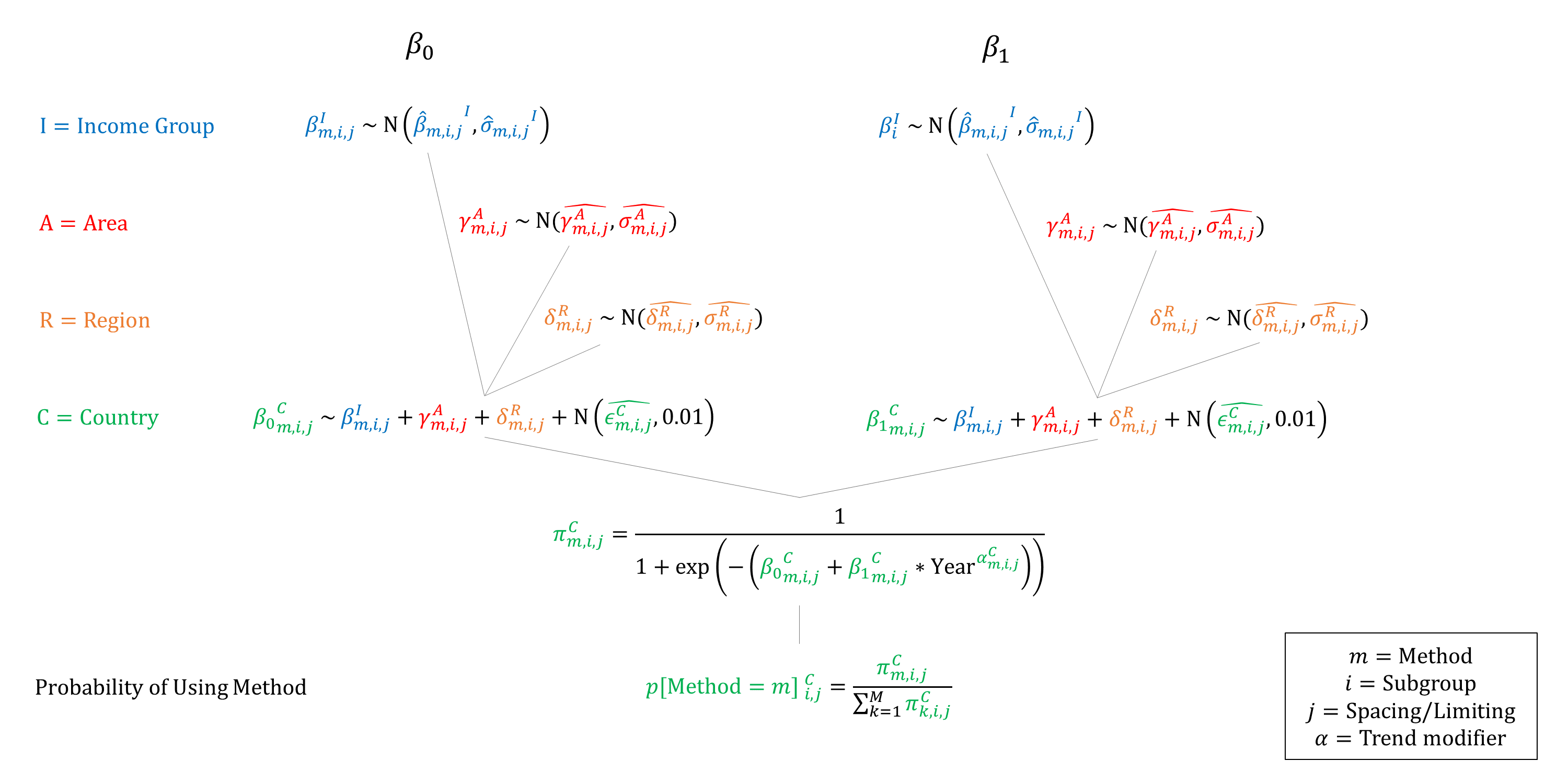Contraception Method Mix
Model Inputs \(\rightarrow\) Family Planning Parameters \(\rightarrow\) Contraception Method Mix
Overview
The mix of contraceptive methods that women may use is simulated in the model based on demographic characteristics and age. Women may switch between methods in the model for reasons such as side-effects or method failure.
Data
Method of contraception is based on data from the DHS (variable v312), conditional on whether a woman is spacing or limiting. We estimated age and time trends based on DHS data for 1,409,587 women from 254 surveys in 74 countries.
We model the use of 10 contraception methods: Pill, IUD, Injections, Condom, Female sterilization, Male sterilization, Periodic abstinence, Withdrawal, Implants, Other. Due to the small number of responses for certain methods we combined ‘Diaphragm’ with ‘Condom’, and ‘Prolonged abstinence’ with ‘Periodic abstinence’. We re-coded other methods not listed above as ‘Other’. Here we plot time trends in method mix for spacing and limiting by income group, based on DHS data. (Note: No high income countries are available in the DHS.)
Parameters
We estimated hierarchical logistic regression models for each method, stratified by subgroup. Separate models were estimated for spacing and limiting. The predicted probabilities of each method were re-normalized to ensure that the probabilities sum to 1.0. We used upper middle income priors for high income countries due to lack of DHS data in high income countries.

Priors
Spacing
Pill
IUD
Injections
Condom
Periodic abstinence
Withdrawal
##### ImplantsOther
Limiting
Pill
IUD
Injections
Condom
Female sterilization
Male sterilization
Periodic abstinence
Withdrawal
Implants
Other
Model Implementation
A method of contraception is assigned to women if their need for spacing or limiting is met. Methods can be assigned whenever a woman experiences a fertility event, such as sexual debut, at the end of pregnancy (due to delivery or termination), or at the end of her simulated duration of use.
GMatH (Global Maternal Health) Model - Last updated: 28 November 2022
© Copyright 2020-2022 Zachary J. Ward
zward@hsph.harvard.edu